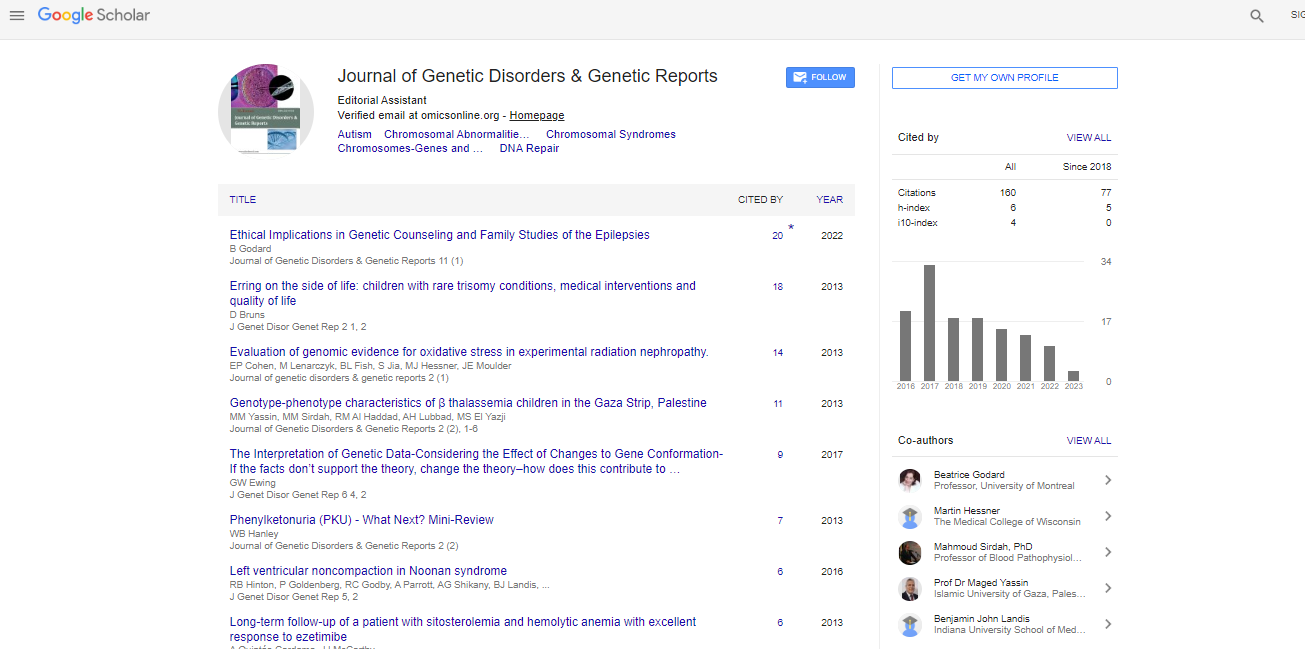Research Article, J Genet Disor Genet Rep Vol: 6 Issue: 2
Expression of TCTP-Related Genes
Jun-ichi Kashiwakura1,2 and Toshiaki Kawakami1,3*
1Division of Cell Biology, La Jolla Institute for Allergy and Immunology, La Jolla, CA 92037, USA
2Department of Immunology, Graduate School of Pharmaceutical Sciences, Hokkaido University, Sapporo 060-0812, Japan
3Department of Dermatology, University of California San Diego, School of Medicine, La Jolla, CA 92093, USA
*Corresponding Author : Toshiaki Kawakami, M.D, Ph.D
Division of Cell Biology, La Jolla Institute for Allergy and Immunology, 9420 Athena Circle, La Jolla, California 92037, USA
Tel: +858-7526814
Fax: +858-7526986
E-mail: toshi@liai.org
Received: May 06, 2017 Accepted: May 22, 2017 Published: May 30, 2017
Citation: Kashiwakura J, Kawakami T (2017) Expression of TCTP-Related Genes. J Genet Disor Genet Rep 6:2.doi: 10.4172/2327-5790.1000156
Abstract
Translationally controlled tumor protein (TCTP) encoded by TPT1 gene is a multifunctional protein involved in fundamental cellular processes of cell-cycle progression, proliferation, survival, malignant transformation, and regulation of pluripotency and cancer stem cells, as well as allergic inflammation. Here we report the cloning of four TCTP-related cDNAs from human peripheral blood mononuclear cells. These genes lack introns, suggesting that they are pseudogenes generated by retrotransposon-mediated integration of TPT1 gene. However, some of them are expressed at extremely low levels in limited tissues and hematopoietic cells. None of the four related proteins is expected to bind IgE, which is required for TCTP’s proallergic reactions. These results collectively suggest that they genes play negligible biologic roles in humans.
 Spanish
Spanish  Chinese
Chinese  Russian
Russian  German
German  French
French  Japanese
Japanese  Portuguese
Portuguese  Hindi
Hindi 



